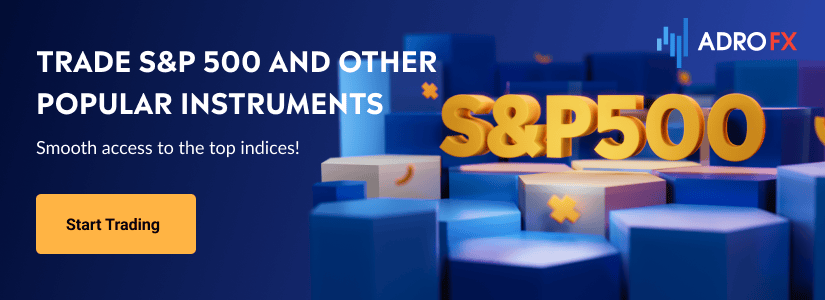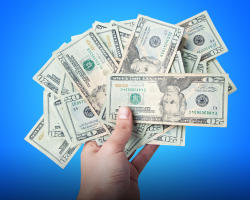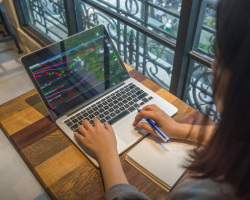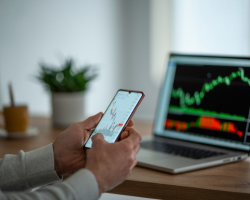How to Learn to Trade Forex (from 0) - Forex Education for Beginners Part II
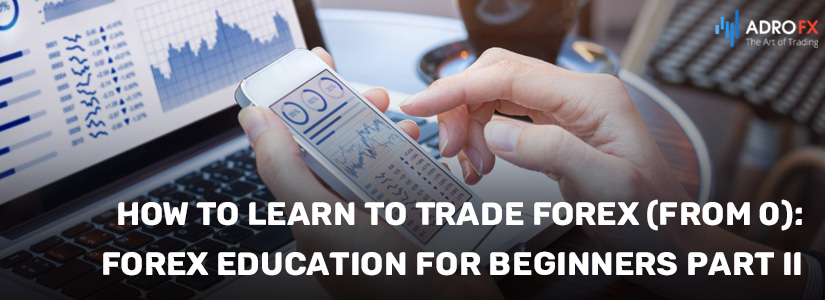
In the first part of this guide, we have learned that trading requires knowledge and preparation, and it is not easy cash as advertised. Before setting unrealistic goals, it is important to keep in mind that trading is risky and losses are a part of the process. Learning forex trading involves analyzing the market and understanding the technical analysis (chart patterns, indicators, candlesticks). Today we will tell you more about learning to trade forex, including fundamental analysis, and trading assets, leverage, and much more.
Fundamental Analysis and Its Basic Methods
The main goal of the fundamental analysis is to detect the deviation of the real value of a currency pair from the traded market price. For this purpose, the following macroeconomic indicators are subject to comprehensive analysis:
- Key interest rate adjustments;
- Domestic debt;
- Decrease/increase of unemployment rate in the country;
- Global GDP changes;
- Data on the financial performance of the industries that form the basis of a country's economic well-being, and many other statistical indicators published by governments around the world. A big influence on the Forex market is data about the American economy.
Any course that begins a free forex education emphasizes the American dollar as the dominant market currency. Changes in key US economic indicators affect 90 percent of the pairs traded in the market.
Before the Fed's key interest rate release, which happens every three months, the market freezes for two to three days. Trading occurs in a tight corridor, only to explode when the Fed's decision is released.
A decrease in the key interest rate leads to a drop in the dollar. If a trader calculates from the economic data that the Fed will cut the rate, they will prepare a sell order and capitalize on the decline of the dollar in the major currency pairs.
How to Choose a Currency Pair for First Trades
Experts recommend choosing one or two major currency pairs at most when starting trading on a currency exchange. Major currency pairs are those involving the US dollar.
The trader should forego working with high volatility and exotic pairs.
If this is your first experience, it would be better to avoid EUR/USD. It is the most popular currency pair in the world, but therein lies the problem. Many factors may affect its behavior. Start your forex analysis studies with GBP/USD, USD/CHF, or USD/JPY. The market is always liquid, the spreads are small and there is a lot of analytical information, which will help in the first stage of making a trading plan.
You should be patient and gain trading experience. Once you master your strategies, learn the peculiarities of trading on the news, and choose your trading style, you will feel confident and be able to add other currency pairs to your trading. You should keep in mind that every currency pair has its peculiarities and time of maximum activity on the market.
It's difficult to suggest a specific asset to start with because it's just your decision, and as you know, as many traders as there are opinions, the market situation changes as well. Observe the history of various currency pairs in the time frames of one hour or higher, and you will see certain features of the behavior of each of them.
Leverage
Brokers in forex are the ones who allow trading with leverage (margin trading). It is necessary to begin with that the standard lot on forex is $100,000. Despite the possibility of trading with fractional lots, brokers provide a special margin - leverage. It may be 1:2, 1:50, or 1:200 - as you choose depending on your account.
For example, if you chose 1:100 leverage, that means that with $500 on your account, you will be able to trade a $50,000 volume. The only risk is that not only your earnings will grow, but also if they do, your losses.
Useful Books for Traders
You should begin your education with books written by successful practicing traders.
Small Encyclopedia of the Trader, E. Nyman
Republished many times bestseller, it is often recommended to beginners to get acquainted with trading. This is a good choice: the book is suitable for beginners, and it contains a lot of illustrative material: charts, schemes, and formulas.
It tells briefly, and clearly about all the key aspects of trading, the main emphasis is on forex. Fundamental analysis is covered, and a course on technical analysis is given - basic information, but it is not bad to start with.
The difficulty is that this is not fiction, and reading it can quickly tire you out. Therefore, it is better to start forex training for beginners with simple information, such as the following book.
Getting Started in Technical Analysis, Jack D. Schwager
For those wishing to delve deeper into technical analysis, this work from the author of the popular series "Market Wizards," which tells how the best traders were successful.
But this book is first of all an educational book: it describes the key aspects of technical analysis and theory is supported with practice, offering some problems that can be used to test how well you master the material.
Technical Analysis from A to Z, Steven B. Achelis
Another important book for those who want to learn the intricacies of technical analysis. Steven B. Achelis, one of the pioneers of using information technology in trading, in the first part of the book, explains the basics of technical analysis, and in the second part, he describes the methods and indicators used in it, as well as examples of their application.
The book can become a textbook for beginners as well as a reference book for experienced traders because it is impossible to keep so many details in your head all the time and it is very convenient to refer to it when necessary.
Technical Analysis: Power Tools for Active Investors, Gerald Appel
The creator of MACD, one of the most popular technical indicators, clearly understands a lot about technical analysis. This book, unlike a couple of previous ones, is neither a textbook nor a reference book.
Appel dwells on his developments and explains how to use them, he believes that the best traders must not follow the crowd, but get ahead of it, using his methods and not the ones already in the arsenal. The book should be read after learning the basics of technical analysis.

Enhancing Trader Performance: Proven Strategies From the Cutting Edge of Trading Psychology, Brett N. Steenbarger
A manual for beginner traders, which focuses on the psychology of trading. There are almost no technical details, but it contains a lot of interesting psychological nuances. The author believes that trading is a science, which means that one can find and use many regularities where many see only chaos.
Fibonacci Applications and Strategies for Traders, Robert Fischer
The importance of the Fibonacci numbers for trading is one of the things, which can confuse first. It's all the more important to learn more about how this is justified theoretically and learn how to use them - because they are very important.
Lessons on how to set key levels with them and understand where the trend can change are the main things in this book. It also describes trading systems based on the following conclusions from wave theory.
The Day Trader's Course: Low-Risk, High-Return Strategies For Trading Stocks And Futures, Lewis Borsellino
It takes a lot of skill and discipline to train as a day trader. If you want to try it, it is worth reading this book first: the author describes his own experience and tells about the psychological nuances of action trading.
Much attention is paid to technical details: the entry and exit points, the definition of trends, and indicators. The author talks about how a trader thinks and shows the whole process by the example of his own trades.
Day Trading The Currency Market: Technical And Fundamental Strategies To Benefit From Market Swings, Kathy Lien
This book will help you get to know the forex market enough to start trading it on your own. For experienced traders as well, Kathy Lien, a famous trader, and analyst herself, describes the strategic techniques, infrastructure of the foreign exchange market, and the changes that have taken place in the market in recent years.
The book also highlights trading strategies on which you can build your own.
Trading Chaos: Maximize Returns With Proven Technical Techniques, Bill M. Williams
Bill Williams is a famous trader and multimillionaire author of several best-selling books on psychology in trading and technical analysis. Among them is this book: An understanding of what drives people in trading combined with the skills of technical analysis can work wonders. Williams develops his chaos theory and shows how market chaos can be used to capitalize.
Reading these books, one must ponder the text. If a chapter is incomprehensible, reread it and try to understand, not quit.
Tips From Famous Traders
Successful traders do not consider it shameful to give some tips to newbies, to motivate them in studying the market, and to instill confidence in their own abilities. A few key pieces of advice are worth highlighting:
- Risk no more than you can afford to lose, but enough at the same time to make the gain substantial (Ed Seykota).
- The market is like the ocean; its waves move up and down regardless of your desires (Alexander Elder).
- Trying to analyze the chart with open positions all the time would rather negatively affect the results (Nial Fuller).
- Whenever my greed has caused me to grab quick gains or outlive the time period in which I am trading, I have had to pay dearly for it (Larry Williams).
- Don't get greedy. It's okay if you lose some funds. If you can't get in at a favorable price, forget about that trade and start looking for the next one (Linda Raschke).
- Whenever I enter a position, I know where my stop is. That's the only way I can sleep easy. I know where I'm going to exit before I even enter. The size of the position in a particular trade is determined by the Stop Loss, and the stop loss is determined technically (Bruce Kovner).
- Each new trade has nothing to do with the previous one (Nial Fuller).
- True traders are stingy with emotions regardless of the situation. There is no need to take defeats to heart, as well as to be overly pleased with success (Alexander Elder).
Final Thoughts
In conclusion, learning to trade forex requires a great deal of knowledge, preparation, and patience. It is essential to start with basic forex education that emphasizes technical and fundamental analysis, and fundamental analysis aims to identify the deviation of the real value of a currency pair from the traded market price. Choosing the right currency pairs to start trading is vital, and experts recommend choosing one or two major currency pairs involving the US dollar to avoid high volatility and exotic pairs. Also, leverage plays a crucial role in trading forex, and brokers allow trading with leverage, which provides an opportunity to trade with higher volumes than the account balance. Finally, reading useful books written by successful traders is an excellent way to learn the intricacies of trading forex. By following these tips and practicing your strategies, you can develop your trading style, gain confidence, and achieve success in the forex market.
About AdroFx
Established in 2018, AdroFx is known for its high technology and its ability to deliver high-quality brokerage services in more than 200 countries around the world. AdroFx makes every effort to keep its customers satisfied and to meet all the trading needs of any trader. With the five types of trading accounts, we have all it takes to fit any traders` needs and styles. The company provides access to 115+ trading instruments, including currencies, metals, stocks, and cryptocurrencies, which make it possible to make the most out of trading on the financial markets. Considering all the above, AdroFx is the perfect variant for anyone who doesn't settle for less than the best.
